Related Research Articles

In European Christianity, the divine right of kings, divine right, or God's mandation, is a political and religious doctrine of political legitimacy of a monarchy. It is also known as the divine-right theory of kingship.
Pope Adrian II was the bishop of Rome and ruler of the Papal States from 867 to his death. He continued the policy of his predecessor, Nicholas I. Despite seeking good relations with Louis II of Italy, he was placed under surveillance, and his wife and daughters were killed by Louis' supporters.

Theodoret of Cyrus or Cyrrhus was an influential theologian of the School of Antioch, biblical commentator, and Christian bishop of Cyrrhus (423–457). He played a pivotal role in several 5th-century Byzantine Church controversies that led to various ecumenical acts and schisms. He wrote against Cyril of Alexandria's 12 Anathemas which were sent to Nestorius and did not personally condemn Nestorius until the Council of Chalcedon. His writings against Cyril were included in the Three Chapters Controversy and were condemned at the Second Council of Constantinople. Some Chalcedonian and East Syriac Christians regard him as blessed.

Anointing is the ritual act of pouring aromatic oil over a person's head or entire body.

René of Anjou was Duke of Anjou and Count of Provence from 1434 to 1480, who also reigned as King of Naples as René I from 1435 to 1442. Having spent his last years in Aix-en-Provence, he is known in France as the Good King René.

Ottokar I was Duke of Bohemia periodically beginning in 1192, then acquired the title of King of Bohemia, first in 1198 from Philip of Swabia, later in 1203 from Otto IV of Brunswick and in 1212 from Frederick II. He was an eminent member of the Přemyslid dynasty.

The Crown Jewels of the United Kingdom, originally the Crown Jewels of England, are a collection of royal ceremonial objects kept in the Jewel House at the Tower of London, which include the coronation regalia and vestments worn by British monarchs.
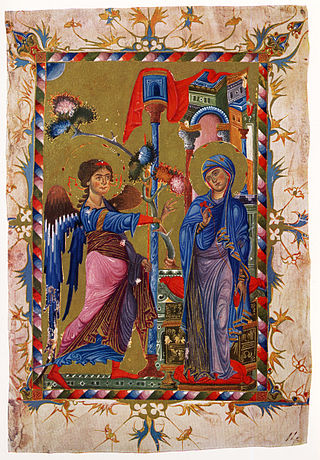
The Annunciation is, according to the Gospel of Luke, the announcement by the archangel Gabriel to Mary that she would conceive and bear a son through a virgin birth and become the mother of Jesus Christ, the Christian Messiah and Son of God, marking the Incarnation. Gabriel told Mary to name her son Jesus.
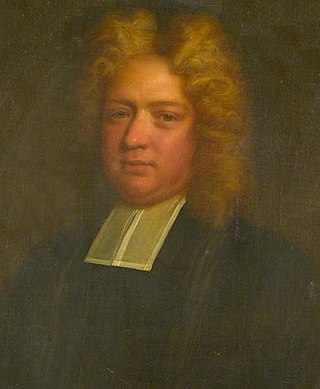
William Sherlock was an English church leader.
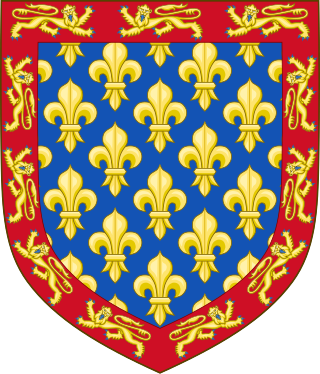
Hamelin de Warenne, Earl of Surrey, was an Anglo-Angevin nobleman, being an elder half-brother of the first Plantagenet English monarch King Henry II.

Eleanor of Austria, also called Eleanor of Castile, was born an Archduchess of Austria and Infanta of Castile from the House of Habsburg, and subsequently became Queen consort of Portugal (1518–1521) and of France (1530–1547). She also held the Duchy of Touraine (1547–1558) in dower. She is called "Leonor" in Spanish and Portuguese and "Eléonore" or "Aliénor" in French.
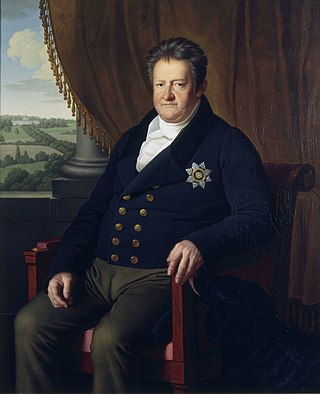
Karl August, sometimes anglicised as Charles Augustus, was the sovereign Duke of Saxe-Weimar and of Saxe-Eisenach from 1758, Duke of Saxe-Weimar-Eisenach from its creation in 1809, and grand duke from 1815 until his death. He is noted for the intellectual brilliance of his court.
A congé d'élire is a licence from the Crown in England issued under the great seal to the dean and chapter of the cathedral church of a diocese, authorizing them to elect a bishop or archbishop, as the case may be, upon the vacancy of any episcopal see in England.
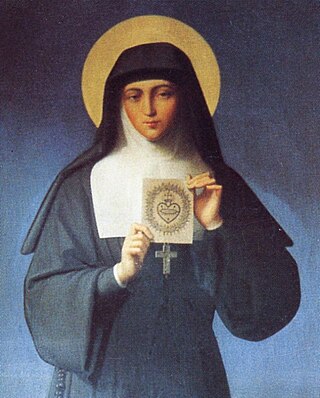
Margaret Mary Alacoque, VHM, was a French Catholic Visitation nun and mystic who promoted devotion to the Sacred Heart of Jesus in its modern form.

The royal touch was a form of laying on of hands, whereby French and English monarchs touched their subjects, regardless of social classes, with the intent to cure them of various diseases and conditions. The thaumaturgic touch was most commonly applied to people suffering from tuberculous cervical lymphadenitis, and exclusively to them from the 16th century onwards. The disease rarely resulted in death and often went into remission on its own, giving the impression that the monarch's touch cured it. The claimed power was most notably exercised by monarchs who sought to demonstrate the legitimacy of their reign and of their newly founded dynasties.

A touch piece is a coin or medal believed to cure disease, bring good luck, influence people's behaviour, carry out a specific practical action, etc.
Shalom Aleichem is a traditional song sung by many Jews every Friday night upon returning home from synagogue prayer. It signals the arrival of the Shabbat, welcoming the angels who accompany a person home on the eve of the Shabbat. The custom of singing "Shalom Aleichem" on Friday night before Eshet Ḥayil and Kiddush is now nearly universal among religious Jews.

The accession of the King of France to the royal throne was legitimized by a ceremony performed with the Crown of Charlemagne at the Reims Cathedral. In late medieval and early modern times, the new king did not need to be anointed in order to be recognized as French monarch but ascended upon the previous monarch's death with the proclamation "Le Roi est mort, vive le Roi!"
Les Rois thaumaturges: Étude sur le caractère supernaturel attribué à la puissance royale particulièrement en France et en Angleterre is a work by historian Marc Bloch first published in 1924. It deals with the miraculous powers attributed to the Kings of France and the Kings of England, the most famous of which is the healing of scrofula by touch. Also known as the King's Evil, it was "an extremely frequent and dreaded ailment in Europe at the time". This is a groundbreaking book, as its approach draws on historical anthropology, Marc Bloch introduced anthropology, history of mentalities and comparative history into historical studies, heralding the historiographical revolution of the Annales.
References
- ↑ Walter William Skeat; Anthony Lawson (1914). A Glossary of Tudor and Stuart Words: Especially from the Dramatists. Original from the University of Michigan: Clarendon Press. p. 97.
- 1 2 Chisholm 1911.
- ↑ Les Rois thaumaturges. Étude sur le caractère supernaturel attribué à la puissance royale particulièrement en France et en Angleterre (Book II, chapter ii)
- This article incorporates text from a publication now in the public domain : Chisholm, Hugh, ed. (1911). "Cramp-rings". Encyclopædia Britannica . Vol. 7 (11th ed.). Cambridge University Press. p. 364.